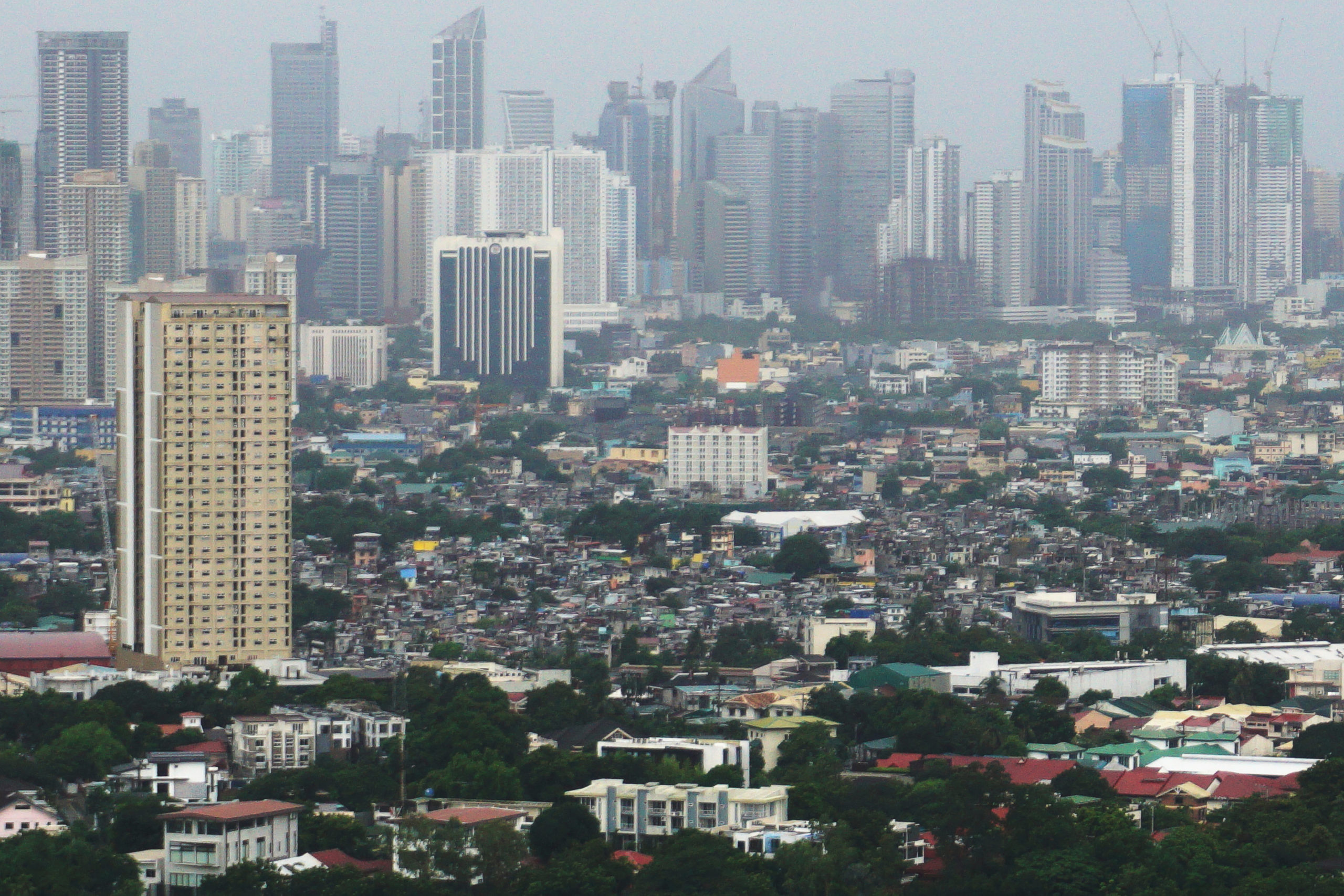
In this photo taken on July 22, 2018, residential (L) and informal settlers (R) areas are pictured against the backdrop of Manila’s financial district of Makati. (Photo by TED ALJIBE / AFP)
The Marcos administration will hit its growth target this year amid easing inflation and expectations of interest rate cuts, but economic expansion next year might fall short of the state’s goal, according to the latest outlook of the Asian Development Bank (ADB).
In its flagship “Asian Development Outlook” report released on Wednesday, the Manila-based multilateral lender kept its gross domestic product (GDP) growth projection on its host country at 6 percent for this year.
READ: PH GDP growth estimate for 2024 cut, but still 2nd fastest in Asean
The ADB’s forecast, if realized, would give President Ferdinand Marcos Jr. a GDP growth rate that would match the lower end of his 6- to 7-percent target range for this year. At the same time, the Philippines would tie with Vietnam as the fastest growing economy in Southeast Asia, or Asean, in 2024.
Both countries would also beat the 5-percent average growth rate projected for Developing Asia, which refers to the 46 developing members of the ADB.
2025 growth may fall below gov’t target
For 2025, the ADB retained its 6.2 percent growth projection for the Philippines, which would settle below the government’s growth target of 6.5 to 7.5 percent for next year. Nevertheless, the Philippines would still share the top spot with Vietnam as the best performers in the region in 2025, if ADB’s forecasts come true.
The ADB said softer price increases and upcoming rate cuts by the Bangko Sentral ng Pilipinas (BSP) would help support consumer spending, which historically accounts for over 70 percent of the country’s GDP.
READ: Philippine economy grew 5.7% in Q1
”Moderating inflation and expected monetary easing in the second half of 2024 will support household consumption and investment,” ADB said.
Based on government data, growth of household spending eased to 4.6 percent in the first quarter—the weakest reading since the 4.8-percent contraction at the height of COVID-19 pandemic in the first quarter of 2021—amid stubbornly high inflation and interest rates.
That, in turn, held back the first quarter GDP growth to 5.7 percent, slower than market consensus.
Benign inflation
With inflation expected to cool down following the government’s decision to reduce import duties on rice, BSP Governor Eli Remolona Jr. said the central bank might start its easing cycle in August, likely ahead of the US Federal Reserve.
In its report, the ADB also left its inflation forecasts for the Philippines untouched at 3.8 and 3.4 percent for this year and next, respectively. If realized, inflation would settle within the BSP’s 2- to 4-percent target range.
“Most of Asia and the Pacific is seeing faster economic growth compared with the second half of last year,” said ADB chief economist Albert Park.
“The region’s fundamentals remain strong, but policy makers still need to pay attention to a number of risks that could affect the outlook, from uncertainty related to election outcomes in major economies to interest rate decisions and geopolitical tensions,” Park added. INQ